

Nashik grape is a variety of grape produced in Nashik district, which is known as the "grape capital of India". Nashik contributes to more than half of the total grape export from the country.


Nashik grape is a variety of grape produced in Nashik district, which is known as the "grape capital of India". Nashik contributes to more than half of the total grape export from the country.
Nashik, called "grape capital of India", is the leading grape producer in the country, [1] [2] with about 1.75 lakh hectare of land under grape cultivation as of December 2015. [3] It produces an estimated 10 lakh tonne grape at about 20 tonne per hectare. [2] About 8,000 acres are used for cultivation of grape wine varieties. [4] The catchment areas of grape production in Nashik district are Kalvan, Peint Igatpuri, Sinnar, Niphad, Yeola, Nandgaon, Satana, Surgana, Dindori, Malegaon. [5]
Nashik accounts for 55 percent of total grape exports from India and 75 percent from the state of Maharashtra. [1] Nashik grape export increased from about 4,000 tonnes in 2003 to over 48,000 tonnes in 2013. The export further increased to more than 65,000 tonnes in 2014. [3] About half of the export corresponds to the Netherlands; with Germany, United Kingdom and Belgium as the next major destinations. [6] In 2013–14, Russia and China emerged as major markets for Nashik grape. [2]
Nashik grape received the Geographical Indication status in 2010–11, as per Geographical Indications of Goods (Registration and Protection) Act, 1999. [7]

Table grapes are grapes intended for consumption while fresh, as opposed to grapes grown for wine production, juice production, or for drying into raisins.
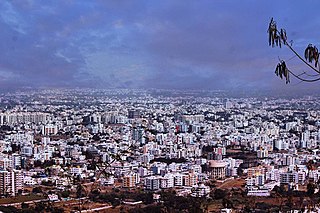
Nashik, Marathi: [naːʃik], formerly Nasik) is a city in the northern region of the Indian state of Maharashtra. Situated on the banks of the river Godavari. The population of Nashik city is around 2.2 million and is emerging as one of the fastest-growing cities in India. Nashik is located about 165 km (103 mi) northeast of the state capital Mumbai, and about 210 km (130 mi) north of Pune. The Mumbai-Pune-Nashik region is called the "Golden Triangle of Maharashtra". With its high agricultural production, Nashik is dubbed the Napa Valley of India and the "Wine Capital of India" as more than half of India's vineyards and wineries are located here. Around 90% of all Indian wine comes from the Nashik Valley. Nashik is one of the Hindu pilgrimage sites of the Kumbh Mela, which is held every 12 years.

New Zealand wine is produced in several of its distinct winegrowing regions. As an island country in the South Pacific Ocean, New Zealand has a largely maritime climate, although its elongated geography produces considerable regional variation from north to south. Like many other New World wines, New Zealand wine is usually produced and labelled as single varietal wines, or if blended, winemakers list the varietal components on the label. New Zealand is best known for its Marlborough Sauvignon Blanc, and more recently its dense, concentrated Pinot Noir from Marlborough, Martinborough and Central Otago.
Lasalgaon is a census town in Nashik District in the Indian state of Maharashtra.
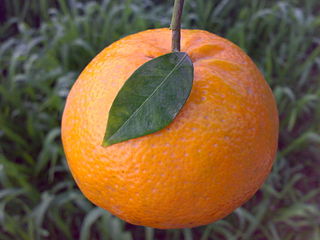
The Kinnow is a high yield mandarin hybrid cultivated extensively in the wider Punjab region of India and Pakistan.

The Cypriot wine industry ranks 50th in the world in terms of total production quantity, and much higher on a per-capita basis. The wine industry is a significant contributor to the Cypriot economy through cultivation, production, employment, export and tourism.

Coffee production in India is dominated in the hill tracts of South Indian states, with Karnataka accounting for 71%, followed by Kerala with 21% and Tamil Nadu. Indian coffee is said to be the finest coffee grown in the shade rather than direct sunlight anywhere in the world. There are about 250,000 coffee growers in the country; 98% of them are small growers. As of 2009, Indian coffee made up just 4.5% of the global production. Almost 80% of Indian coffee is exported; 70% is bound for Germany, Russia, Spain, Belgium, Slovenia, United States, United Kingdom, Japan, Greece, Netherlands and France. Italy accounts for 29% of the exports. Most of the export is shipped through the Suez Canal.

Agriculture in Sudan plays an important role in that country's economy. Agriculture and livestock raising are the main sources of livelihood for most of the Sudanese population. It was estimated that, as of 2011, 80 percent of the labor force were employed in that sector, including 84 percent of the women and 64 percent of the men.

Agriculture in Albania is still a significant sector of the economy of Albania, which contributes to 22.5% of the country's GDP. The country spans 28,748 square kilometres of which 24% is agricultural land, 36% forest land, 15% pasture and meadow and 25% urban areas including lakes, waterways, unused rocky and mountain land. It can be separated into three main zones such as the lowland zone alongside the coastline of the country, the hill zone in the lowland and the mountain zone.

Pakistan holds a significant position in the global rice market and is one of the leading rice-producing countries. The rice sector is crucial for the country's economy, providing livelihoods to a substantial portion of the population and contributing substantially to agricultural exports.

South Tyrolean Apple is the English translation of the geographical indication Mela Alto Adige / Südtiroler Apfel, which is registered as a "Protected Geographical Indication" (PGI) in the European Union and the UK. It applies to apples which are cultivated in South Tyrol in a traditional manner. South Tyrol is Europe's largest connected fruit-growing region. Since 2005, eleven of the more than one dozen different apple varieties which are grown under the conditions of the PGI. The GI is used in translated form South Tyrolean Apple PGI by all of South Tyrol's marketing companies for export.
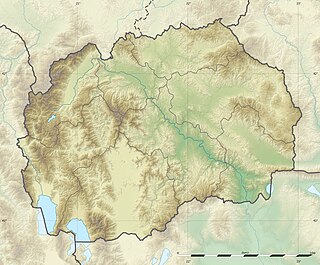
North Macedonia produces wine on some 22,400 hectares of vineyards, and the production was 108,100 tonnes in 2008. There are also some additional 30,000 hectares of vineyards dedicated to table grapes. Red wine dominates the Macedonian wine production, with around 80 per cent.

Kampot pepper is a cultivar of black pepper grown and produced in Cambodia. During the early 20th century under the French protectorate within French Indochina it was also known as Indochinese pepper. The pepper's modern name is derived from the area where it is grown, the Province of Kampot, but its historic name uses the French term for Mainland Southeast Asia.
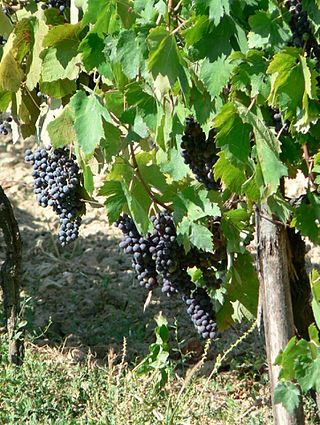
Bangalore blue grape, also simply called Bangalore Blue, is a variety of fox grape grown in districts around Bangalore in India. It is one of the three major varieties of grape in the state of Karnataka. It received a geographical indication tag from the Government of India in 2013.

Coorg orange, also called Coorg mandarin, is a cultivar of orange from Kodagu in Karnataka. It was given the Geographical Indication status in 2006.
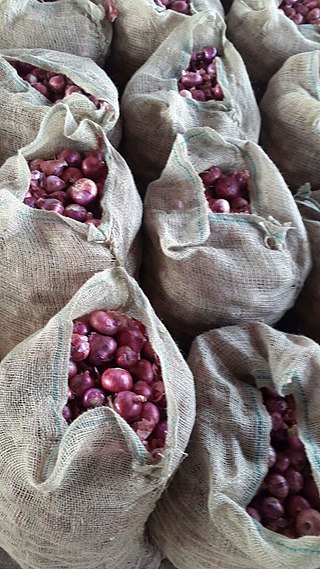
Bangalore rose onion, locally called gulabi eerulli, is a variety of onion grown in and around Bangalore in Karnataka. It received the Geographical Indication tag in 2015.

Kangra tea is a tea from the Kangra district in Himachal Pradesh, India. Both black tea and green tea have been produced in the Kangra Valley since the mid-19th century. Kangra tea was given the Geographical Indication status in 2005.

Mahabaleshwar strawberry is a strawberry grown in the hilly slopes of Mahabaleshwar, which accounts for about 85 percent of the total strawberry produced in India. Strawberry, along with raspberry, mulberry and gooseberry, is produced on a large scale in and around Mahabaleshwar. Mahabaleshwar strawberry obtained the geographical indication (GI) tag in 2010.
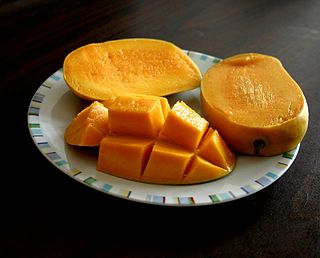
The 'Gir Kesar' mango, also called Kesar, is a mango cultivar grown in the foothills of Girnar in Gujarat, western India. The mango is known for its bright orange colored pulp and was given the geographical indication status in 2011. The biggest market of Gir Kesar is in Talala Gir known as a Mango Market Yard.

Nashik valley wines are specially protected under the patent of the Geographical Indication in India for the region of Nashik district in Maharashtra, India. Wine in the area is produced from several vineyards, with Sula Vineyards being one of the major producers of wine in Nashik. The wine is produced in two types: red and white. The district has 52 wineries in operation and consequently, Nashik is occasionally known by the epithet "The Wine Capital of India".